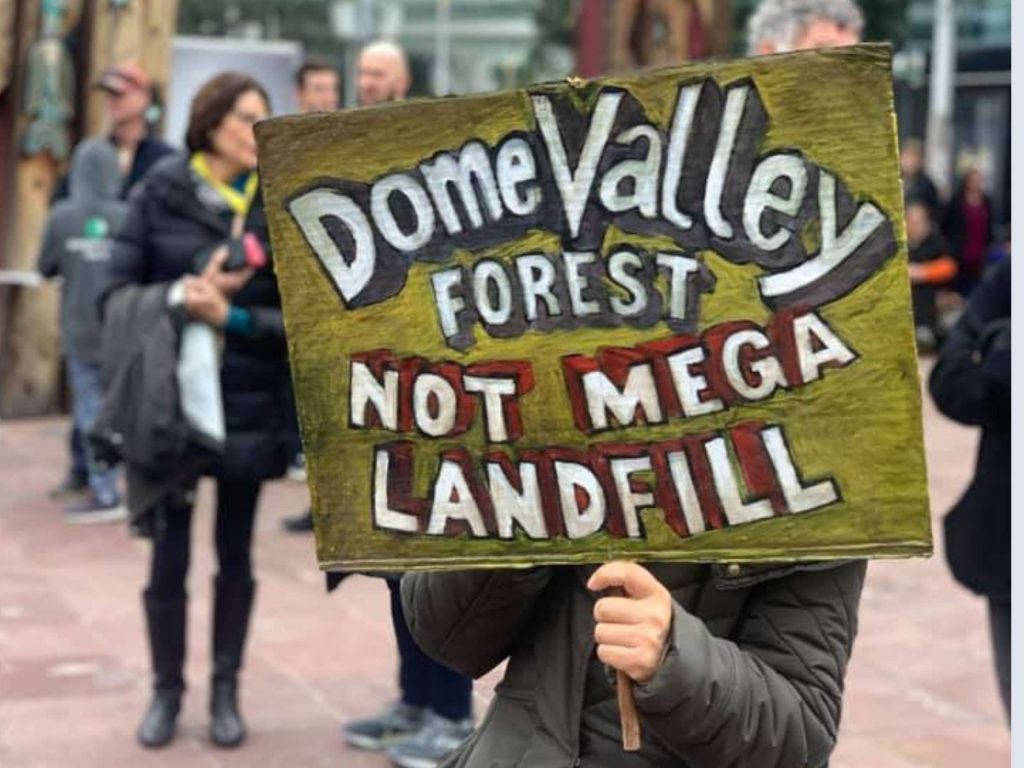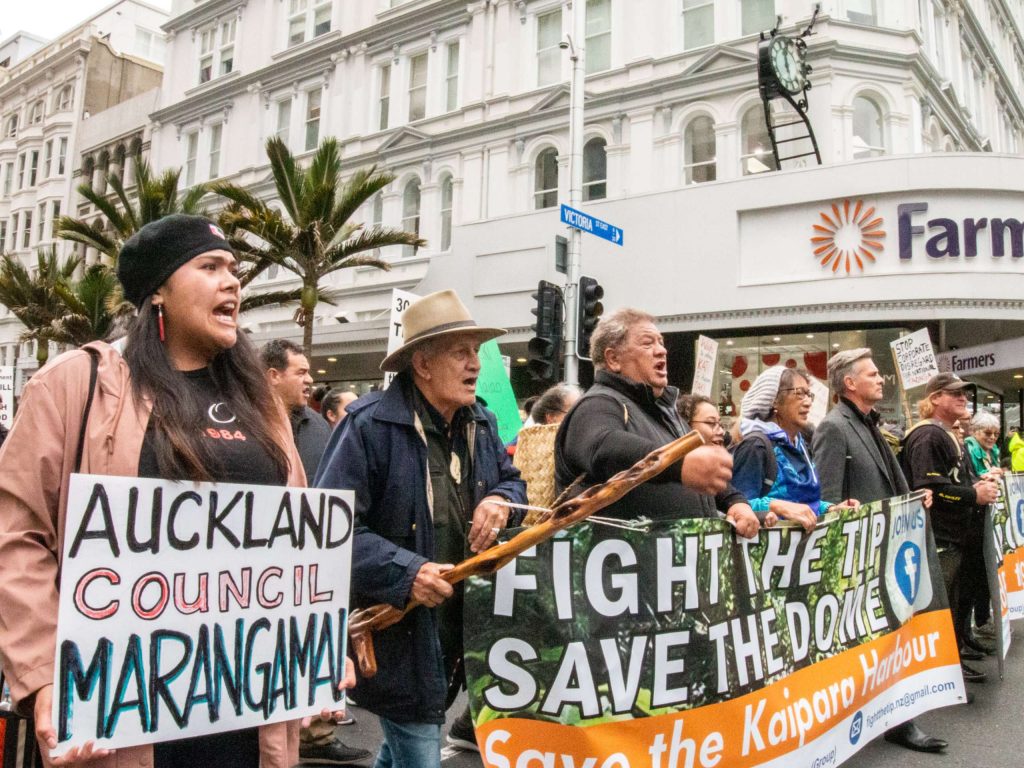Hua – Land based Activities

Dome Valley Landfill (Wayby Valley)
The impacts of the Dome Valley Landfill proposal on the whenua, wāhi tapu, puna, and waterways, along with the huge risks posed to Kaipara Moana are totally unacceptable. For these reasons the Board of Te Rūnanga o Ngāti Whātua have been opposed to Waste Management and its application to build the largest landfill in the country.
The efforts of Ngāti Whātua PSGEs, hapū and marae in driving the consultation, and their drive to achieve collaboration with our local communities, including the hīkoi down Queen Street, need to be acknowledged. The hīkoi was a major success with hundreds of Māori and Pākeha turning up with their placards to support the cause. It’s also important to acknowledge Ngāti Manuhiri for hosting the hearing and taking good care of our people.

Unfortunately, the decisions didn’t all go in our favour. Waste Management obtained a resource consent to build the landfill but failed in their application for a plan change. This resource consent is now being appealed by Te Rūnanga o Ngāti Whātua and other participants that opposed the landfill.
What stands out in the decisions is the only Māori commissioner, who was the Chairperson of the hearings committee, opposed both applications based on the evidence that was put forward by iwi, hapū and marae. The other three commissioners who are old pākeha men, recognised none of the evidence put forward by hapū and marae. It highlights problems with the law and the lack of understanding and willingness of pākeha commissioners to take on and or understand Te Ao Māori and tikanga.
It is clear that more Māori commissioners need to be trained to ensure iwi Māori values are given appropriate weighting in decisions. We need to train our own people to be commissioners so we can make decisions when and where it is appropriate to do so. We need to ensure that only commissioners who understand and appreciate Māori values can preside over consent applications that are of great importance to iwi Māori.
District and Regional Councils
Te Rūnanga o Ngāti Whātua has a mammoth task of getting on top of the issues that emanate from the four councils that sit within the rohe of Ngāti Whātua. They include Auckland Council, Kaipara, and Whangārei District Councils, and the Northland Regional Council. Te Rūnanga o Ngāti Whātua more than likely have the greatest number of councils, people and workload to contend with, more than any other iwi in New Zealand.
One of the challenges Te Rūnanga o Ngāti Whātua has had, and continues to have, is the lack of resources and people to enable adequate involvement in resource management matters. In the 2021-22 year Te Rūnanga o Ngāti Whātua intend to appoint a manager to oversee this work.
The work done in the last year has largely been driven by staff who have responsibility in other workstreams of Te Rūnanga o Ngāti Whātua.
From a strategic point of view, the board has focused on high level policies that drive Council decision making. Each of the Ngāti Whātua related Post Settlement Governance Entities (PSGEs) have their own inhouse capacity to deal with resource management issues so it makes sense for Te Rūnanga o Ngāti Whātua to operate at a high level unless major consents, such as Dome Valley, come up and PSGEs, hapū and marae request support.

